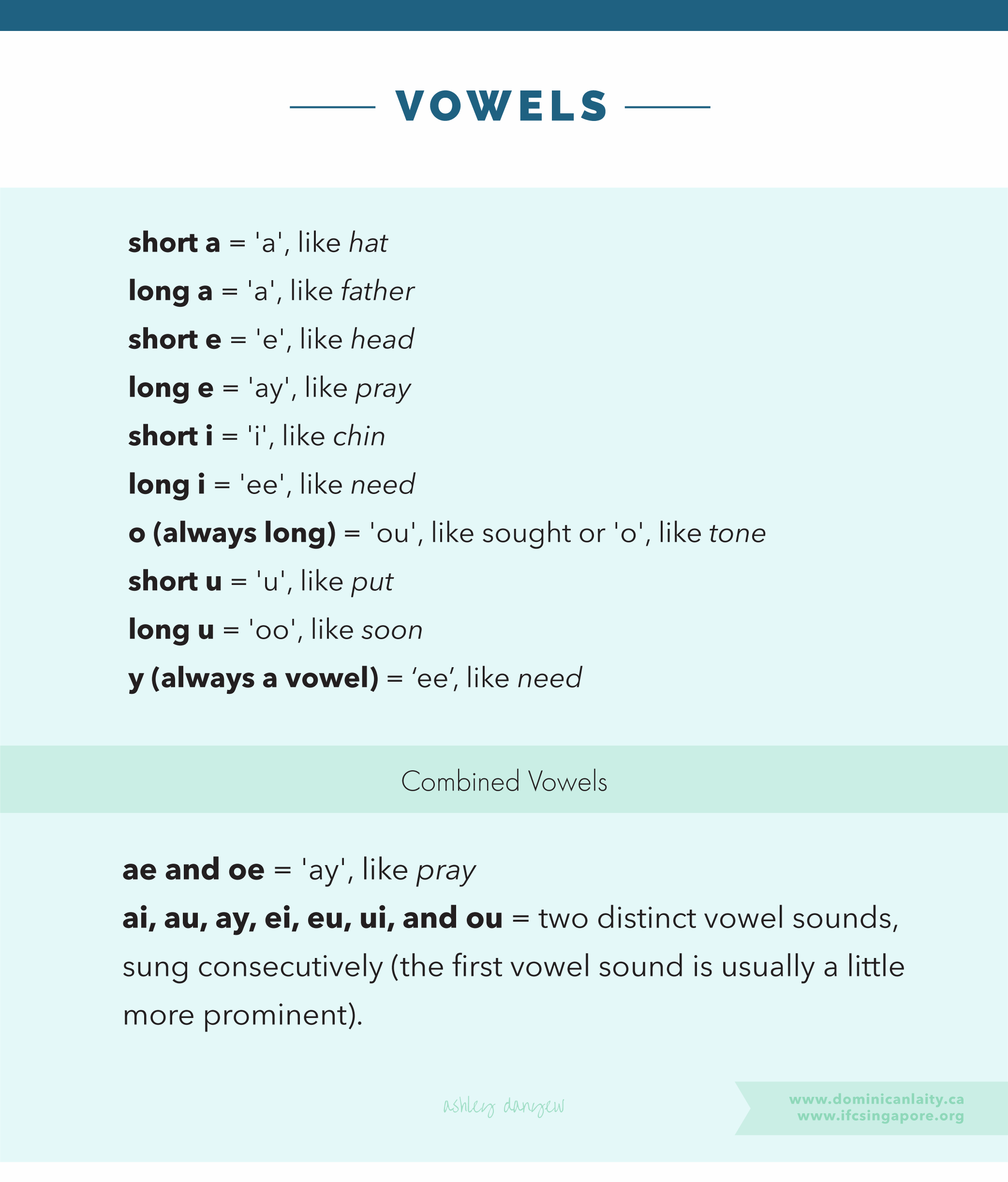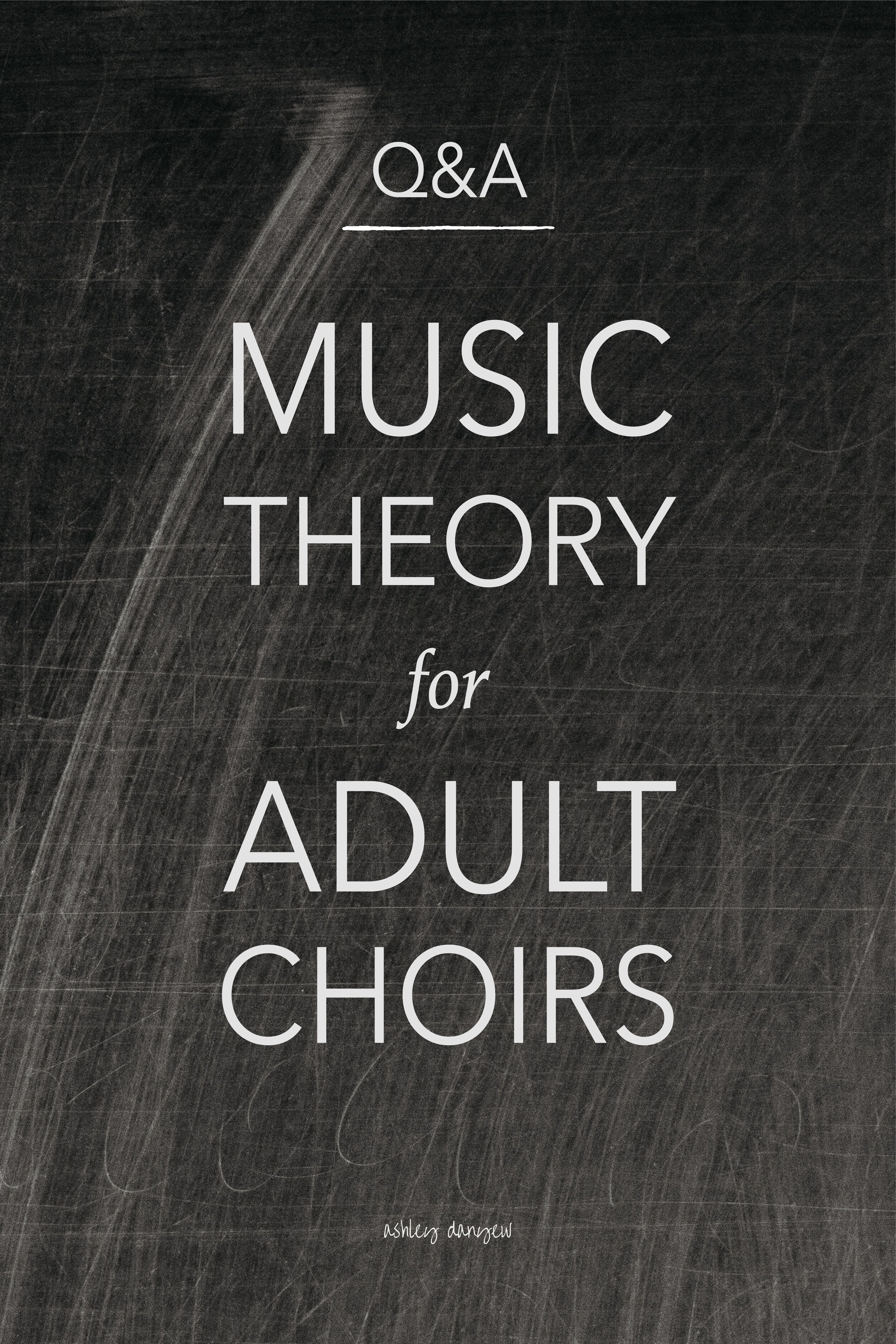Does your choir know how to sing in Latin?
There’s something sacred about singing an anthem in Latin, I think; it connects us back to our ancient roots, the development of church music centuries before us, and those that gathered to worship in those times and places.
The best part about singing in Latin? It’s made up of pure vowels. It’s great for singing!
There are two basic pronunciation guides for Latin: Italianate and Germanic. In Italianate Latin (more popular), the pronunciation follows the rules of the Italian language. In Germanic, the pronunciation follows the rules of the German language.
Today, I’m sharing a quick pronunciation guide for Italianate (also known as Ecclesiastical) Latin, plus ten SATB anthems with Latin text.
A Quick Latin Pronunciation Guide for Choirs
(Italianate or Eccelesiastical Latin)
Whether you’re using Italianate or Germanic Latin, the vowels are the same — tall, rounded, pure vowels (no rounded diphthongs, like we have in English). For a quick refresher on teaching vowels to your choir, see these posts:
The Church Choir’s Guide to Vowels: Part I
The Church Choir’s Guide to Vowels: Part II
The general rule is to use Germanic pronunciation for German composers (like J.S. Bach) and Italianate for pretty much everything else.
If your choir has used both forms of Latin pronunciation in the past, there are a few things to watch out for when introducing a new piece. These consonant sounds are often easily confused:
Ready to start singing?
Here are ten Latin or Latin/English anthems for your church choir to sing:
*Disclosure: I get commissions for purchases made through links in this post.
10 Latin Church Choir Anthems
Ecce Novum (Ola Gjeilo)
SATB Choir with Piano and opt. String Quartet
Text: Latin
Smooth and sustained, the beautiful melodic lines weave together to tell the story of Christmas. The strings add warmth and softness to the gentle, lyrical anthem.
Soli Deo (To God Alone) (David Waggoner)
SATB Choir with Piano and opt. Percussion
Text: Latin and English
A simple, memorable anthem with layered choral parts, a rhythmic, but supportive keyboard accompaniment, and distinctive percussion. Features a quote of the doxology (in the style of the piece).
A Jubilant Song (Mary Lynn Lightfoot)
2-Part, SAB, or SATB Choir with Piano
Text: Latin and English
A classical-style anthem of praise, featuring mixed meter, mixed mode, and imitation. This is a great teaching piece for choirs of all ages!
Vitam Habeant (That They May Have Life) (Ruth Elaine Schram)
Unison/2-Part Choir with Piano and opt. C Instrument
Text: Latin
With text based on John 10:10, this lyrical anthem would be especially appropriate during Lent or in the Sundays after Easter.
O Magnum Mysterium (Morten Lauridsen)
SATB Choir, a cappella
Text: Latin
A modern motet with rich, warm harmonies and sweeping lines, retelling the mystery of Christ’s birth.
Te Deum (To God) (Michael Bedford)
Unison with Organ and opt. Bb Trumpet and Timpani
Text: Latin and English
A regal, yet accessible setting of this familiar 5th century Latin text, woven together with original text by Michael Bedford.
Ubi Caritas (Where Charity Is) (Victor C. Johnson)
2-Part or 3-Part Mixed Choir with Piano
Text: Latin
A gentle, sweet setting of this traditional Latin text, with moments of imitation, a contrasting middle section, and a return of the first section at the end. Limited ranges make it very accessible for smaller choirs.
Pié Jesu (Merciful Jesus) (Mary Lynn Lightfoot)
2-Part or 3-Part Mixed Choir with Piano
Text: Latin
Composed in memory of the children who lost their lives in the 1995 Oklahoma City bombing, and for all the children who have been victims of violence since, this beautiful requiem is accessible for children’s, youth, or adult choirs.
Ave Verum (W. A. Mozart)
SATB Choir with Organ and opt. String Quartet
Text: Latin
A classic anthem, very appropriate for a communion Sunday.
Gloria (Vivaldi/arr. Patrick M. Liebergen)
SAB Choir with Keyboard
Text: Latin and English
From DIXIT by Antonio Vivaldi, this arrangement offers a great opportunity to teach your choir a classic from the repertoire and introduce singing in Latin (both versions of the text are printed in the score). Very accessible part-writing makes it great for smaller adult choirs or even a youth choir.
What are your favorite Latin anthems? What does your choir love to sing?
Sources + more helpful resources:
Italianate (Ecclesiastical) Latin Pronunciation Guide
Germanic Latin Pronunciation Guide
Latin Pronunciation Demystified
Pronouncing Church Latin: A Quick Reference
Latin Pronunciation According to Roman Usage









































